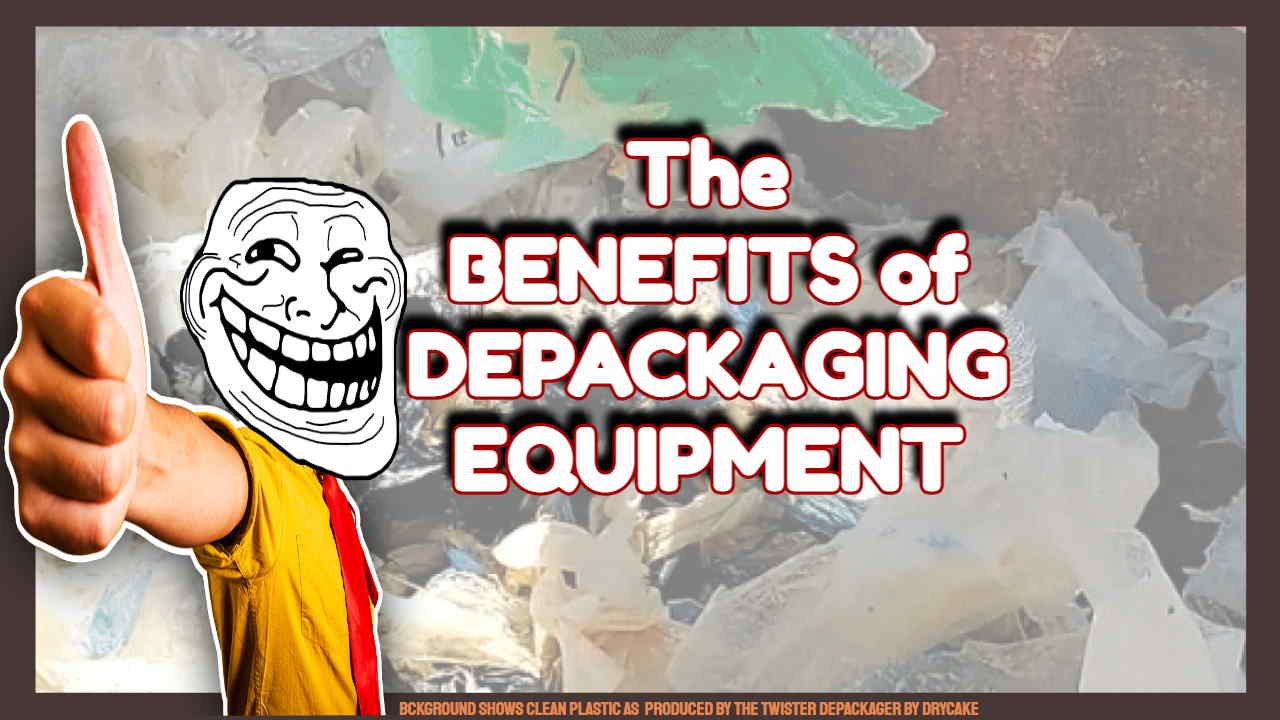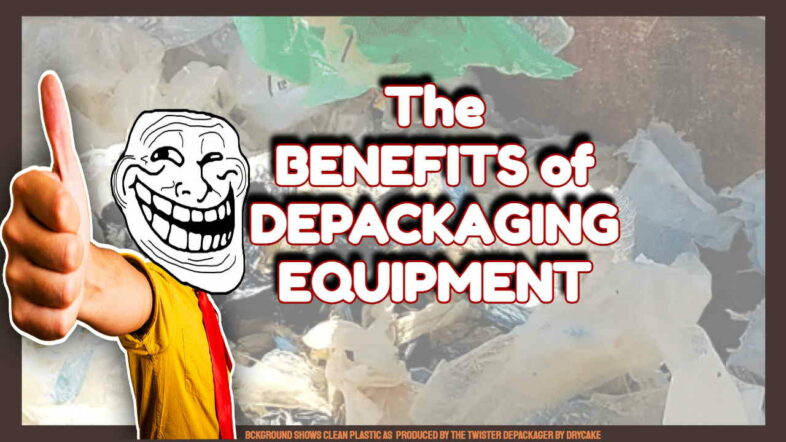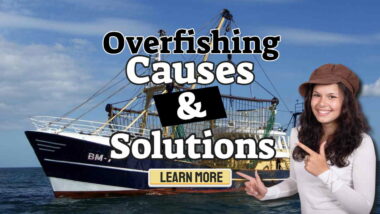We discuss the benefits of depackaging equipment. The news is that the latest “low destruction” energy-efficient and microplastics avoiding depackaging equipment has now improved to provide reliable “bankable” sustainable Organic Waste Processing which really can reduce waste for all operators of organic waste (especially food waste) reprocessing facilities while simultaneous raising the profitability of organic waste recycling.
If you are interested in de-packaging equipment, then you are in the right place. In this article, we will discuss how de-packaging equipment can benefit your business. If you are considering investing in de-packaging equipment, you need to consider several factors. In addition to the equipment’s performance, it’s also important to consider the cost and maintenance. Below are we explain what we mean by it, why it is needed, some of the key benefits of de-packaging equipment and how it works.
What has this got to do with Climate Change?
The carbon emissions for the wastage of food are enormous and if added together globally are equivalent on their own to the greenhouse gas emissions from very large nations. Anything done to reduce food waste reduces the rise in global temperatures. Efficient food waste depackaging holds an important role in this.
What is Food Waste Depackaging?
Food waste depackaging is the process of converting organic waste such as food waste into at least two material steams. These comprise an organic output stream and a rejects stream (also frequently called a “fraction”) from food waste which normally contains the food plus the packaging and other materials known variously as contaminants and unwanted materials.
The packaging can be any type of packaging you can imagine but is mostly plastic from thin films to PET bottles, and all sorts of packets and packs you can think of. Some will be unopened, and others will be broken and in pieces.
The contaminants present can be from washing the food and will be in all particle sizes ranging from clay to grit and even the odd stone. Metal and glass containers, either open and unused or sealed, will also often appear when they have been thrown into kitchen bins, and sometimes even cutlery and crockery will appear as well!
The first action needed, is known as debagging, to open all bags and containers to allow the organic material to be separated from the other materials.
This can be done by crushing in a hammermill, or grinding, both the food and the packaging into small pieces. Another way is by shredding it into tiny pieces. This has the advantage of avoiding outsized particles which might block or clog the process equipment. But this uses a lot of energy and makes a lot of small particles which are hard to separate cleanly. Making lots of small particles produces a large surface area, and as the organic content tends to coat the surface of every particle, the reject stream tends to hold a lot of organic material.
It is better to avoid breaking up the material any more than needed to open all the packets and containers, but only the very latest depackaging machines do this.
In addition, the older hammer and paddle based depackaging machines are prone to shredding grinding up metal cans into tiny pieces. Some cans are coated in heavy metals, often zinc and this is a toxic metal and unacceptable in organic pulp and composted digestate due to its damaging effect on the environment.

Growing Awareness of the Potential Danger of Microplastics
With the problems being caused to natural systems by the build up of microplastics becoming clearer all the time the argument for the avoidance of microplastic creation has become unassailable. So, the best depackaging equipment now available avoids even the use of large paddles preferring to use the action of air and rotating plates which expel all but the food particles and organic pulp while the heavier grit and small plastic pieces also reside in that fraction.
An example of this is seen in the third generation Twister Depackager by Drycake here. Higher solids content is possible in the organic pulp from less destructive equipment designs often due to the lower surface area which needs more water to provide a washing action. But the high velocity of the vortex airflow in the Twister also tends to pull out cleaner plastic from a more viscous pulp. A low water content/ high solids pulp is usually best suited for the use of the pulp to feed anaerobic digestion processes.
The Importance of Delivering Clean Pulp at an Optimum Solids Ratio
The production of a clean pulp while very important is certainly not all that de-packaging equipment needs to do well. Separating the food waste pulp from the soil, other waste, and other non-food materials, and collecting it all in waste bins may only be partially completed by using screens and/ or filters in the initial stage.
For example, for organic wastes which contain a significant amount of soil in the Twister system the separated waste is then sent for further treatment where sedimentation further clean the organic content via their Seditank, or other units, before separate disposal of the inert material.
The Seditank for example uses simultaneous settlement (sedimentation) and flotation. The second stage use of a Seditank creates a purer pulp by the settlement of the inert silt, sand and grit. While removing small pieces of floating plastic material, and any plastic film, still present after the depackaging (Twister) stage, achieving industry-leading separation purity.
Why is depackaging needed?
Various depackaging processes are needed for different types of food waste. Food which has become inedible is often still sealed in the original packaging, but even food waste from catering establishments will contain some unopened packs and containers. The result is that unless a machinery operative is employed to manually inspect and remove packaging all food waste has to go through a depackaging stage. The risk of clogging or blockage in the subsequent process is otherwise too high. For example, plastic and soil fed into a biogas digester tank will eventually build up and require costly manual cleaning with an extended period of loss of biogas production.
Moving toward Net-zero 2050
More and more organic waste, needing depackaging, will have to be used for energy and fertiliser production as the global community moves toward net-zero 2050. For example, in the UK as in many countries, the goal is to ensure that no food waste is sent to the landfill.
To achieve this, the country’s supermarkets are required to first avoid food waste production wherever possible. But food waste avoidance is not always possible.
They still will always need to collect and deposit unavoidable food waste generated at both the warehouse and the store level into special bins. The collected bins are then taken to transfer stations where they are weighed, and the food waste is depackaged and separated.
Benefits of depackers and separators for food waste
A key benefit of food waste depackaging, rather than simply feeding this waste, packages and all, into an EfW Facility (an incinerator) is the ability to use the organic waste fraction to produce a renewable fuel. Which will be much more efficiently used than simply using the electrical and CHP energy as in an EfW Plant. This is especially important when considering the amount of food waste renewable energy that can be made available for biogas production. The energy locked up in waste food is huge. Look at it this way. It has often been pointed out that currently if the emissions caused by food wastage were compared to the emission made by nations food waste would be the third-largest nation on the globe. The food waste could be used to produce electricity, compressed into pellets that can be burned for power. This can reduce the need to buy or import fossil fuels. Another important benefit is the reduction in carbon emissions.
Another important benefit of food waste depackaging is the ability to process food which for a variety of reasons is out of specification before it leaves food factories. There is great scope to produce, for example, animal feed by converting source-separated organic waste into a dry cake that can be sold to farms as animal feed. This not only reduces the impact of the waste on landfills but also helps to avoid the cost of the need to dispose of the waste.
In addition, recycling this waste also helps to build the “circular economy” through the efficient reuse of finite source materials. This circular sequence also maintains the level of “raw” materials available for businesses to make their products and sell them to consumers without digging up the earth.
The equipment is also capable of processing the “out of specification” food waste from many food producers’ production lines, and food distribution warehouse operations, into a nutritious dry, animal feed material much sought after by the livestock industry.
How does this form of organic waste treatment help?
The main goal of the food waste depackaging process is to help separate the organic waste from the non-organic waste. The organic waste can then be further processed by being used for feeding the anaerobic digestion process or composting. For example, the UK government has stated that the preferred process in compliance with applying the Waste Hierarchy is the using the anaerobic digestion process for biogas production. The biogas can then be piped to a generator to produce electricity. The organic waste can also be used for producing compost and or as a fertiliser after the energy has been extracted.
Another important goal of the organic waste depackaging process is to reduce or eliminate odours from the waste. Organic waste is often stored in the open air and is often a source of odours. The food waste depackaging process can be designed to eliminate odours.
How does this equipment work?
The focus of the food waste depackaging process is to separate the organic waste from the non-organic waste. Mechanical and electrical equipment is used, to ensure that a suitable trigger is selected to sort the different waste types out, one from another. This process has features that when further developed in the coming years will make it possible for the organic wastes to easily be separated from the non-organic waste.
A summary of “Depackaging equipment for food waste processing”
Many companies offer depackaging equipment for processing food waste. This equipment can help to reduce the amount of food waste sent to landfills and to incineration and so save operators the cost of landfill disposal or similarly costly ERF gate fees.
The best of this equipment can go further to produce an organic pulp ideal for biogas production as the substrate in anaerobic digestion plants. At the same time, this also enables user organisations to turn much of the “reject stream” plastics, ferrous and non-ferrous metals into a recyclate turning a liability into an output to be sold with value. The final win when this occurs is a reduction in carbon dioxide emissions for the benefit of helping nations to meet the COP26 targets for climate change limitation.
It’s important to do this without hammering and pummelling the packaging into tiny plastic pieces (microplastics) so when buying this equipment research its capabilities to comply with regulated limits on plastic content and recyclate processing purity requirements.
However, when this is done right organic waste recycling companies can expect to significantly reduce their costs, increase their profitability, and raise their green credentials toward meeting international targets for limiting the global temperature rises which reoccurring due to climate change.
To find out more about this equipment which can depackage organic waste such as food waste and OFMSW (Organic Fraction of Municipal Waste) click here.
From Humble Beginnings to Industry Leaders: The Story of Landia UK’s Growth with Liz Robinson
Discover the remarkable 30-year journey of Landia UK, a leader in pump manufacturing. Join Liz Robinson as she reflects on her pivotal role from the company’s humble beginnings to its status as an industry innovator in the UK and Ireland. Learn how Landia UK’s commitment to quality and customer service has driven its growth and […]
15 Ways to Prevent Climate Change
Here we describe 15 great Ways to Prevent Climate Change. There are a huge number of ways you can help prevent climate change, from making small changes to your daily routine to voting in elections that promote environmental change. Are you in a rush? Then just read this! Below are ten quick suggested actions that […]
Overfishing – Causes of Overfishing and Overfishing Solutions
The term overfishing is often assumed to refer to the overfishing of fish but in fact, it refers to all aquatic species including shellfish, crabs, lobsters and many others. In a recent study, the University of British Columbia found that China provides the most harmful subsidies to the industry. In fact, in 2011, they provided […]
The Geography of Climate Change
In 2018, I had the opportunity to walk across the surface of an Icelandic glacier that was receding and consider the geography of climate change. I could see a patch of snow and ice off in the distance, the last remnants of another glacier that had long since melted. That ice-strewn area was all that […]








Dear Sir,
I would like to know more about your products in order to evaluate the possibility of a mutual collaboration
Could you please share your complete wide-range offers and your payment terms. I would really appreciate receiving more information about your company and your export activities,
Looking forward to receiving your earliest response.
Sending information to you.